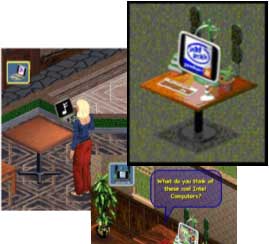
Consider this: Bargaining with the vendor to reduce price, moving out early in the morning for the mandi to get fresh fruits and vegetables, sweating profusely and trying to find a way out in the hustle bustle of the crowd, a nagging feeling of weighing machine not being correct and many more. Now consider this: A fixed price shop with prices at par and sometimes even less than your nearest vegetable vendor, getting fresh fruits and vegetables at any time of the day and shopping in the luxury of ACs, paying for exactly 867gms of onion, etc. Now answer this: which experience would you prefer, the former or latter? Mostly likely the latter and that’s exactly where retail in fresh fruits and vegetables (FFV) come into picture.
India is the second largest producer of fruits and vegetables, next only to China and the total cultivated area of fruits and vegetables is around 12 million hectares, which is close to 7% of the total cultivated area. India produces around 90 million tonnes of vegetables and 40 million tonnes of fruit every year. This accounts for 13.7% of global production in vegetables and around 10% in global production of fruits. The total market size for fresh fruits and vegetables in India is Rs 145,000 crores and organised retail in this segment is a miniscule 300 crores. This figure reflects the huge untapped potential in the Indian FFV market.
The concept of organised retail has been existing in India since early 80s with the existence of players like Mother Dairy and Safal but its only in past one year that the fever of retail in FFV has caught up really fast. In the past three months 60 new outlets have opened across various parts of the country.
Challenges and Opportunities
The present agriculture supply chain has tremendous amount of inefficiencies at the farm level, the intermediary level and at the marketing and distribution level. About 60% of the land is with marginal, small and medium farmers. These farmers are not left with much of bargaining power and hence are left exploited at the hands of intermediaries. Until recently, the private sector was restricted from directly purchasing agricultural produce from farmers. The infrastructure of mandis is lacking and the mandis are mired with inefficiencies. Another inefficiency existent in the structure is the large mark-ups between the farmers’ realization and the final consumers’ price. Retail chain outlets reduce these inefficiencies to a significant level. Efforts are seen from big retail players to improve the efficiency of the agriculture supply chain helping both, the farmers, on one hand (by having fair prices for their produce) and the customer, on the other hand (by giving them a fair price and a comfortable shopping experience). Better price for farmers is the high point of the policy sales pitch of everybody, from the government to retail chains.
There is a great amount of wastage happening post harvest. This wastage is to the tune of nearly 25-30 percent of the total produce. The reason for this loss is the shortages of the cold storage facilities and refrigerated transport. Gulati, a supporter of the retail revolution, says “ Wastage loss will reduce when the same company handles the produce from the farm to the fork, as against now, when farm produce goes through several levels of wholesale and tertiary traders before reaching the retailer. Losses would further reduce with investments in cold-storage.”
Add to this difficulty of cold storage, the opposition that the retail outlets face from small vendors. The recent protests in three major cities against the opening of Reliance Fresh are evidence to the opposition that comes from small vendors. "See this against the single-window clearance for the industry, and you'll realise our grievance. Like industries, we too generate employment and offer services. Why should we be discriminated against?" asks Basant Haryana, leader of a street vendors' union. Whether this fear of small vendors is founded in reason or hype will be discussed in the next section and is there a reason at all for these small vendors to be afraid of?
Above is a brief of the article...complete article can be read on the following:


